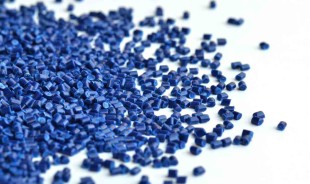 There is no doubt that lead is a harmful material. However, it is so useful, that until recently, it has been nearly impossible to reduce its usage despite the fact that it is known to be harmful to humans and the environment. Lead has been ranked as the second hazardous substance on the U.S. Government’s Top 100 Hazardous Substances Priority List. Lead is a potent threat to human health. Considering the fact that lead is used extensively in a variety of industrial applications and has been for quite some time, there has been a growing demand for identifying a replacement to lead in these numerous applications.
There is no doubt that lead is a harmful material. However, it is so useful, that until recently, it has been nearly impossible to reduce its usage despite the fact that it is known to be harmful to humans and the environment. Lead has been ranked as the second hazardous substance on the U.S. Government’s Top 100 Hazardous Substances Priority List. Lead is a potent threat to human health. Considering the fact that lead is used extensively in a variety of industrial applications and has been for quite some time, there has been a growing demand for identifying a replacement to lead in these numerous applications.
Lead has outstanding physical properties given its high density, ease of casting and fabrication along with high malleability. These factors, and given its low cost, explain lead’s popularity. To come up with a replacement for lead, efforts were made to find composite materials, which would mimic the properties of lead. Composite materials are materials made from two or more constituent materials having different physical or chemical properties and which are combined to form an entirely different material. These lead replacement composite materials pose no toxic threat to the environment and can be recycled during the initial processing and also at the end of a product’s useful life.
Various combinations of polymeric binders and fillers yield compounds with densities ranging from2.0 g/cc to 11.0 g/cc (similar to that of a typical lead alloy). However, only the higher density composites behave similar to heavy metals, primarily lead.
 One such composite material, a Tungsten Polymer, was selected for its high density and given its absence of toxicity. It is now being used as an alternative to lead and has become increasingly popular. This tungsten polymer is composed of tungsten powder and one of a number of standard plastic base resins, which are selected according to the application. These base resin systems include polysulfones (PSU), co-polymides, polyamides (PA), polymethylpentenes (PMP), polyurethanes (TPU), acryloynitrile butadiene styrene (ABS), polyethylenes (PE) and polyetheretherketones (PEEK). It a high molecular polymer composite material having a density up to 11 g/cc (equivalent to lead). It is composed of the following components by weight ratio: a high molecular polymer 20-100, tungsten powder 950-1000, tungsten fibres 0-50, a coupling agent 0.5-5 and other aids 0.5-10
One such composite material, a Tungsten Polymer, was selected for its high density and given its absence of toxicity. It is now being used as an alternative to lead and has become increasingly popular. This tungsten polymer is composed of tungsten powder and one of a number of standard plastic base resins, which are selected according to the application. These base resin systems include polysulfones (PSU), co-polymides, polyamides (PA), polymethylpentenes (PMP), polyurethanes (TPU), acryloynitrile butadiene styrene (ABS), polyethylenes (PE) and polyetheretherketones (PEEK). It a high molecular polymer composite material having a density up to 11 g/cc (equivalent to lead). It is composed of the following components by weight ratio: a high molecular polymer 20-100, tungsten powder 950-1000, tungsten fibres 0-50, a coupling agent 0.5-5 and other aids 0.5-10
The properties of this polymer include:
• High Density ( ≥ 11.34 g/cm^3)
• Perfect Radiation Shielding Performance
• Good Flexibility
• Excellent Workability
• Perfect Environmental Suitability
• Weathering Resistance
• Chemical and Organic Solvent Resistance
• Three Dimensional Forming
• Not classified as toxic waste, if spilled or leaked
• Insoluble in water
• Flash point of >400°C
• No carcinogenic agents
• No respiratory protection is required; gloves and eye protection are routinely recommended during processing
• No health hazard threshold limit value
• Not considered as a Mixed Waste if contaminated by a radioactive waste
Tungsten Polymers have a variety of uses in the following applications and industries:
• Weight and Balance applications—have been used as counterweights for a number of motors, ballasts, and other similar applications
• Sound proofing applications—are used to dampen outside sound in aeroplane headphones
• Automotive—are used as vibration dampening pads to reduce vibration transmitted through the gear shifter
• Sporting Goods – are used as balancing weights in golf club shafts






0 comments:
Post a Comment